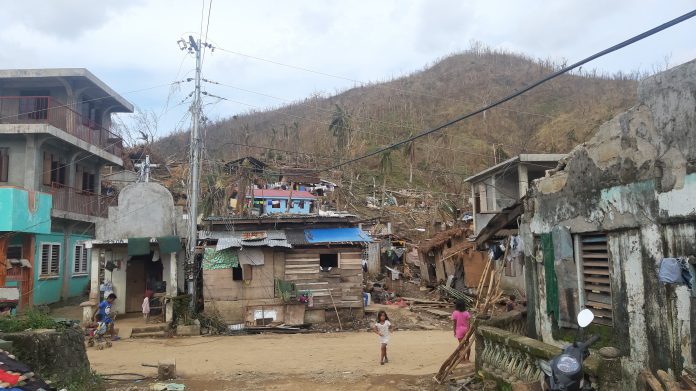Caritas Philippines has identified “disaster-resilient and permanent shelters” among major interventions it will implement for victims of super typhoon “Rolly) in the province of Catanduanes.
The social action arm of the Catholic bishops’ conference has recommended programs that will focus on permanent housing and the rebuilding of the agriculture sector in the early recovery phase of its humanitarian response.
Caritas Philippines released the document on November 7 after its initial assessment of the impact of “Rolly” on the province of Catanduanes.
Father Antonio Labiao, executive secretary of Caritas Philippines, said his office has been coordinating with Church-based humanitarian and charity agencies “on how to immediately initiate interventions.”
“We identified shelter and livelihood as the foremost needs of the people in Catanduanes and other devastated areas in the Bicol region,” said the priest.
At least 37,218 houses were damaged by the super typhoon in 11 municipalities of the province, with at least 13,435 houses totally damaged while about 23,783 partially damaged.
Father Labiao said that based on their evaluation, “heavy-duty materials must be used in building disaster-resilient designed permanent houses.”
“It is not advisable to use light materials for the new houses anymore because this is not the last time that the island will experience a strong typhoon,” he said.
He said Caritas Philippines will be sending the result of its assessment and some recommendations to government agencies tasked to aid typhoon victims.
Father Labiao admitted that the Catholic Church “cannot rebuild all damaged houses alone.”
On November 6, the Catanduanes Provincial Disaster Risk Reduction and Management Office reported that 43,375 families, out of the total 90,049 families in the province, have been affected by the super typhoon.
Authorities said they are expecting the numbers to increase in the coming days as reports are still coming in from the municipalities.
Out of the 11 municipalities, six towns in the southern part of the island province were reported to be “heavily affected.”
Jing Rey Henderson, communications officer of Caritas Philippines, said the agriculture sector has also suffered “significant damage.”
In the abaca industry alone, which is the primary source of income of the province, authorities estimated about US$26.9 million worth of damage.
The provincial government on November 7 said the abaca industry in Catanduanes is expecting to lose at least US$3.1 million in revenue per month in the next three months.
Out of the total 36,000 hectares of abaca plantation in the province, only 9,000 hectares have a 25 percent chance of recovery.
Henderson said more than 13,000 Abaca farmers have been affected.
Catanduanes province is the largest producer of high-quality abaca in the country.









